Volume 36 #3
Contents
- Dependence of the results of the assessment of fusion reserves on the measurement method, tools and parameters of test stimuli
- Ganglion cell regularity in the dolphin’s retina improves during
- Influence of spectral componentsof dayly lighting on eye structures formation for japanese quail coturnix japonica
- Mismatch between electrophysiological and behavioral measurements: example from auditory system of noctuid moths (Lepidoptera, Noctuidae)
- Interaural forward masking in the auditory system of a dolphin
- Radio-sensor technical diagnosis complex electronic assembly
- Accuracy of the coordinates for underlying surface based on photogrammetric measurements of the images with an oblique projection
- Simulation of signal repeator of radio pulses for radio-sensor authentication systems
